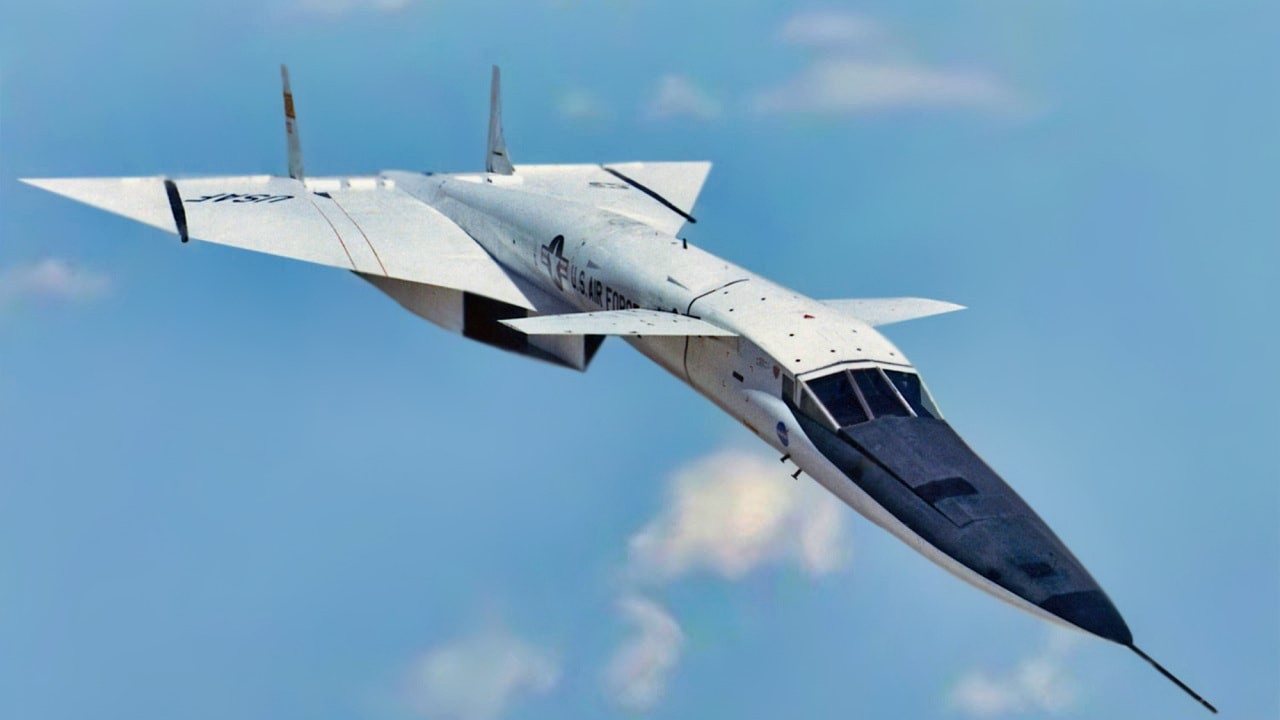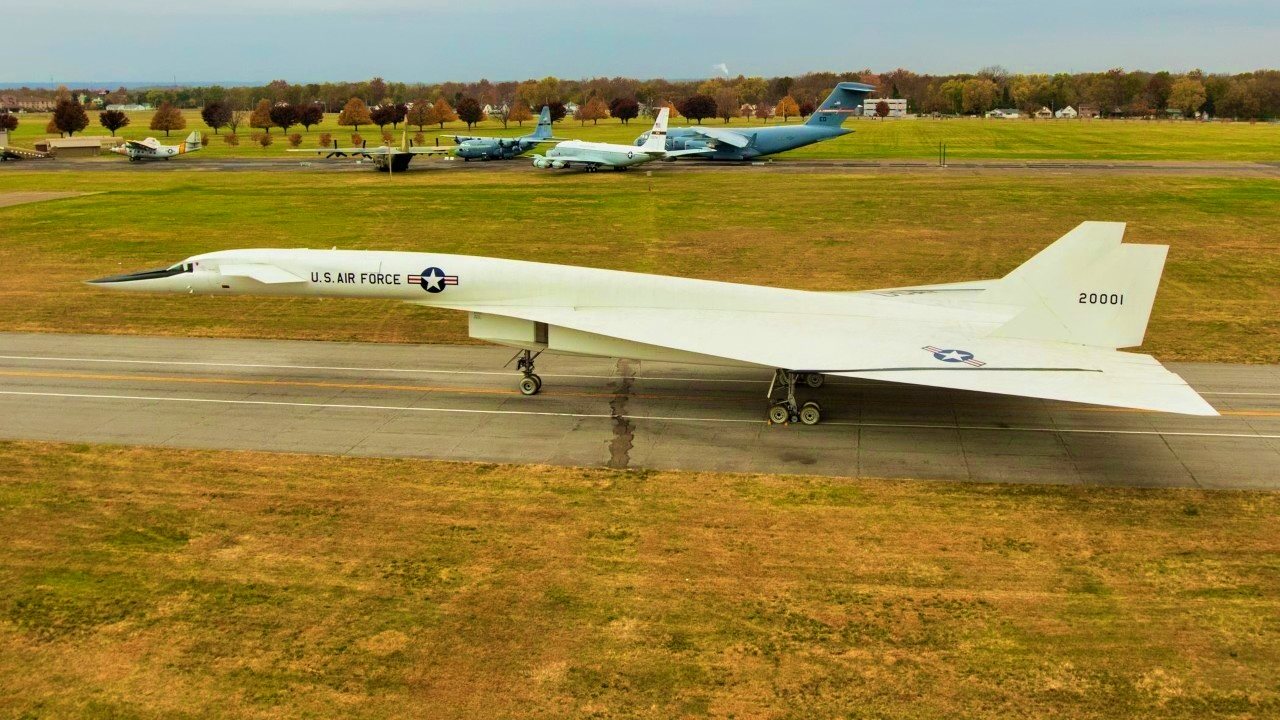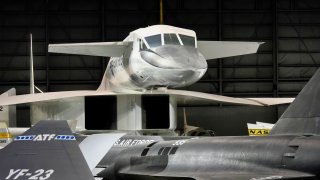XB-70 Valkyrie: The Mach 3 Bomber The Air Force Had to Cancel
The XB-70 Valkyrie, a Cold War-era strategic bomber prototype designed to replace the B-52, is now on display at the National Museum of the U.S. Air Force. Developed to fly at Mach 3.0, the supersonic aircraft was powered by six turbojet engines and featured advanced aerodynamics.
What You Need to Know: The XB-70 Valkyrie, a Cold War-era strategic bomber prototype designed to replace the B-52, is now on display at the National Museum of the U.S. Air Force. Developed to fly at Mach 3.0, the supersonic aircraft was powered by six turbojet engines and featured advanced aerodynamics.

Despite its cutting-edge design, the program was canceled in 1961 due to advancements in Soviet air defenses, such as the S-75 Dina and MiG-25 Foxbat, which rendered it vulnerable. Though never mass-produced, the XB-70 provided critical data for future high-speed, high-altitude flight research for NASA and the U.S. Air Force.
XB-70 Primer
The only remaining XB-70 Valkyrie superbomber is on display at the National Museum of the U.S. Air Force in Dayton, Ohio. The Cold War-era prototype variant of the planned B-70 nuclear-armed strategic bomber was designed to replace the service’s B-52 Stratofortress following the Second World War. However, the program was ultimately nixed by the Kennedy administration due to the Soviet Union’s advancing and growing arsenal of powerful air defense systems which rendered the B-70 obsolete. Despite the early retirement of the B-70 prototype, the Valkyrie was still considered ahead of its time when it was introduced.
The Valkyrie’s Origin Story:
During the mid-1950s, various nuclear weapons were under development in the U.S. Striving to develop appropriate bomber aircraft capable of delivering these weapons became a top priority. Boeing hired RAND Corporation around this time to design an airframe able to lug such weapons that would also carry enough fuel to fly from the continental U.S. to the Soviet Union.
To achieve such a feat, RAND recognized that the new bomber would have to fly at supersonic speeds. The resulting XB-70 fulfilled this objective, capable of reaching speeds as fast as Mach-3.0. At the time, this speed was unmatched across the globe. The platform was powered by six General Electric YJ93 turbojet engines, which allowed for nearly 29,000 pounds of thrust.

The Aviationist has detailed other specs and features incorporated on the Valkyrie: “The aircraft’s distinctive planform featured two canards behind the cockpit and a large triangular delta wing with hinged outboard sections for improved high-speed stability. Designed by North American Aviation, later North American Rockwell and eventually a division of Boeing, the XB-70 featured a long fuselage with a canard or horizontal stabilizer mounted just behind the crew compartment. It had a sharply swept 65.6-percent delta wing, with outer wing sections that could be folded down in flight for better lateral-directional stability.”
Why was the Platform Canceled?
Despite the airframe’s cutting-edge features, the bomber prototype was canceled by the John F. Kennedy administration right before it was set to be deployed by the Air Force. The Soviets had introduced the S-75 Dina and the MiG-25 Foxbat at this point, which essentially rendered the XB-70 useless before this initial deployment since the Dina anti-aircraft air defense system could fire at targets traveling at Mach-3.0. Similarly, the Foxbat was allegedly capable of taking down targets traveling at this top speed.
Several other design issues contributed to the program’s cancellation. The B-70 offered hardly any additional performance over its B-52 predecessor when it came to its low-level penetration role. The new bomber was also much more expensive to produce. Under pressure, the Air Force eventually gave up its efforts to send the prototype through the production line, and the program was officially killed in 1961.
Even though the XB-70 program was phased out, it gave NASA and the Air Force vital data on flying such a hefty airframe at incredibly fast speeds and high altitudes. For this reason, the Valkyrie remains a well-respected airframe among aviation buffs and military experts alike.
About the Author: Maya Carlin
Maya Carlin, National Security Writer with The National Interest, is an analyst with the Center for Security Policy and a former Anna Sobol Levy Fellow at IDC Herzliya in Israel. She has by-lines in many publications, including The National Interest, Jerusalem Post, and Times of Israel. You can follow her on Twitter: @MayaCarlin.
Image Credit: Creative Commons and/or Shutterstock.


